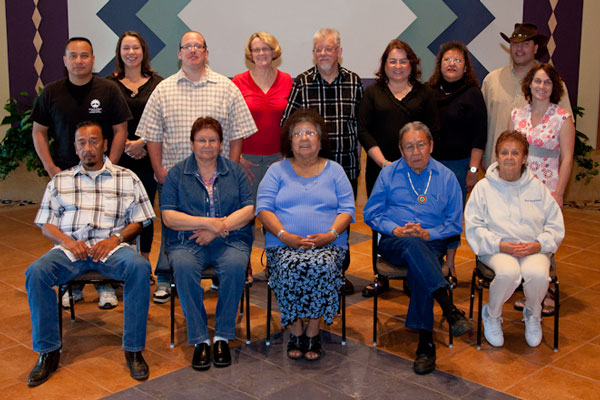Search the dictionary Advanced Search
How to use the Ojibwe People's Dictionary
About the Ojibwe People's Dictionary project
The Ojibwe People’s Dictionary was established by faculty and students in the Department of American Indian Studies at the University of Minnesota. For many years, Professor John Nichols digitally recorded Ojibwe elders as part of a research grant for the National Science Foundation’s (NSF) Endangered Languages Program. His goal was to expand A Concise Dictionary of Minnesota Ojibwe, which he co-authored with Professor Earl Nyholm (Nichols, Nyholm, 1995). Breaking new ground in Ojibwe language study, Nyholm taught Ojibwe at Bemidji State University for many years until his retirement. In time, Nichols anticipated the need for a talking dictionary where digital audio would be embedded within the dictionary entry. Nichols and his departmental colleague, historian Brenda Child, along with curator Marcia Anderson from the Minnesota History Society, began to envision a new dictionary with a broader Ojibwe cultural context. This dictionary would draw on the superb collections of the Minnesota Historical Society to create a virtual museum. As a result, instead of the simple line drawings typical of a print dictionary, the Ojibwe People’s Dictionary features beautiful illustrations of Ojibwe material culture and activities, to narrate the rich cultural heritage and present-day lives of Ojibwe people from the Great Lakes.
Recent technology made it possible to design this innovative, illustrated, talking dictionary, with photographs both old and new, and allowing insight into an Ojibwe way of life that is difficult to comprehend without a visual aid. The dictionary is searchable and no longer relies on accessing words through the alphabetic paths of a print dictionary. It also searches for related words, and includes expanded language information that is often left out due to page limitations. Unlike a book, the talking dictionary will be continuously updated and expanded. Best of all, it allows users to search using the Ojibwe language.
The Ojibwe People’s Dictionary is a timely project. Today, scholars and universities aspire to communicate their research through the digital humanities, and engage the public by means of new technology. Funding the work of scholars, museum professionals, Ojibwe speakers, students, and computer programmers for a special project is major undertaking, and without grants established as a result of the Clean Water, Land and Legacy Amendment this unique dictionary and collaboration between the American Indian Studies Department and Libraries at the University of Minnesota with the Minnesota Historical Society would have still been a dream. Phase one of this project allowed us to begin uniting the Ojibwe language with audio, images, and other resources for a free public website—the Ojibwe People’s Dictionary. We look forward to further collaborations with institutions, educators, the public, and Ojibwe people and communities as we continue to develop the dictionary.

Project Goals
The goals were to create a searchable, talking Ojibwe-English and English-Ojibwe dictionary that speaks in the voices of Ojibwe Elders. As well as providing:
- A gateway into the Ojibwe collections at the Minnesota Historical Society, providing greater access to cultural objects in the MHS collection for Ojibwe community members.
- Detailed Ojibwe language entries, audio, historical photographs, photos of objects in MHS's Anishinaabe collection, video clips, and excerpts from historical documents.
- Expanded language resources for language learners at various levels of fluency, teachers, and community members.
In September 2010, students and faculty from the Department of American Indian Studies at the University of Minnesota met with staff from the Minnesota Historical Society and University of Minnesota Libraries to begin planning the components of an online, multimedia, bilingual talking dictionary. An advisory council of Ojibwe speakers was convened to provide input and approval for language and cultural content.
The original design and programming in Drupal were by Chad Fennell and Ben Preece implementing the plans of John Nichols and Nora Livesay. Jason Roy directed the technical side of the project for the University of Minnesota libraries. Chad Fennell has continued to maintain the site and oversaw the conversion to Ruby on Rails by Bryce Kalow in 2016.
The result of their combined efforts is the Ojibwe People's Dictionary. The Ojibwe People's Dictionary will continue to be expanded with Ojibwe entries and supporting resources.
Currently the dictionary has:
- Search capabilties in Ojibwe and English
- Browsing with short dictionary entries, arranged alphbetically
- Expanded dictionary entries with audio, example sentences, word parts and derivation, word families, semantically related words, Ojibwe texts, historical documents, photos, illustrations, and videos
- 17,000 Ojibwe entries
- Cultural search results of historical documents, photos, illustrations, videos and Ojibwe texts related to the search word
You can also meet the Ojibwe speakers whose words and voices reach out to you through this dictionary. Each audio clip in the dictionary is marked with a speaker's initials and linked to their photos and biographies on the Ojibwe Voices page.
We have provided a basic introduction to the Ojibwe language, the Double Vowel spelling system, parts of speech, abbreviations, and other grammatical terminology used on this website. Thanks to Rand Valentine for his grammatical description of Nishnaabemowin from which we have taken many grammatical terms and descriptions, and thanks to David H. Pentland, the dictionary’s consultant in Algonquian comparative linguistics, for his descriptions and translations of Algonquian word parts on which we have relied heavily.
We invite your feedback as we work to expand this resource, and we hope you enjoy your time with the Ojibwe People's Dictionary.